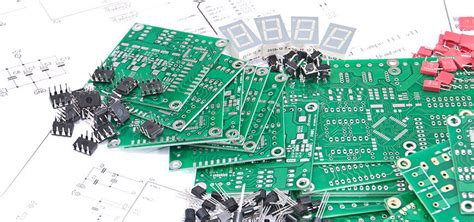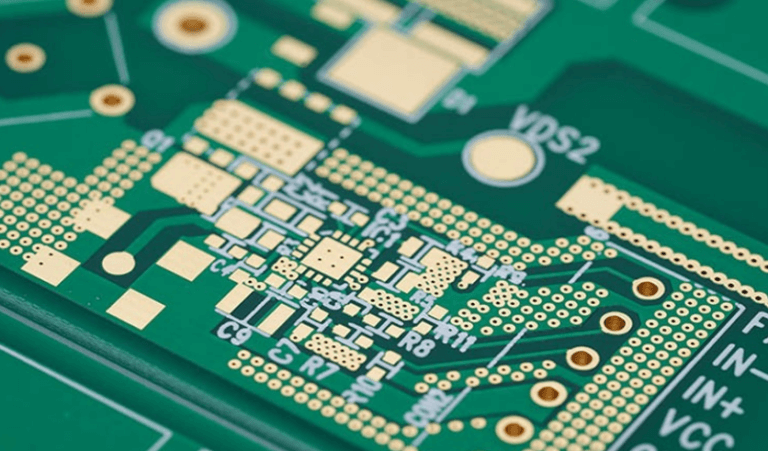Classification of electroplating process Process flow and description
1, Autoclave pressure cooker
It is a kind of container filled with high-temperature saturated water vapor, which can apply high pressure. It can place laminated Laminates samples for a period of time to force water vapor into the plate and then remove the plate sample. Placed on a high-temperature molten tin surface, its “delamination-resistant” properties were measured. This word has another synonym for Pressure Cooker, which is more commonly used by the industry. In addition, there is a “pressurization method” in high temperature and high pressure carbon dioxide in the laminate lamination process, which is also called Autoclave Press.
2. Cap Lamination Cap Pressure
It refers to the traditional laminating method of the early multi-layer laminates. At that time, MLB’s “outer layer” multi-layered thin copper substrate was laminated and pressed together until the end of 1984, when the production of MLB increased greatly, it was changed to the current one. Copper skin type large or large pressure legal (Mss Lam). This early use of MLB pressurization on single-sided copper thin substrates was called Cap Lamination.
3, Caul Plate separator
When the multi-layer plate is pressed together, each opening of the press bed often overlaps a plurality of loose materials (for example, 8 to 10 sets) of the “subscription” plate to be pressed, and each set of “spent material” ( Between the books, they must be separated by a flat, smooth and hard stainless steel plate. This separate mirror stainless steel plate is called Caul Plate or Separate Plate. Currently used are AISI 430 or AISI 630.
4, Crease folds
In the laminating of laminates, it is often referred to as the occurrence of wrinkles in the case of improper handling of copper. Thin copper skins below 0.5 oz are more prone to such drawbacks when laminated in multiple layers.
5, Dent depression
Refers to the appearance of moderate and uniform depression on the copper surface, which may be caused by the partial-like protrusion of the steel plate used for press-fitting. If there is a decline in the trim-type edge, it is called Dish Down. If these disadvantages are left on the circuit after the copper is etched, it will cause the impedance of the high-speed transmission signal to be unstable, and the noise will appear. Therefore, the absence of such a defect should be avoided on the copper surface of the substrate.
6, Foil Lamination copper foil pressure plate method
The mass production type multilayer board, whose outer layer of copper foil and film is directly laminated with the inner skin, has become a multi-row board mass laminating method (Mass Lam), to replace the traditional tradition of single-sided thin substrates. Pressure law.
7, Kiss Pressure pressure, low pressure
When the laminates are pressed together, when the plates in each opening are positioned, they begin to warm up and heat up from the lowest level, and are lifted upwards with strong hydraulic jacks to oppress each opening ( The bulk material in the opening is glued. At this point the combined film (Prepreg) began to soften or even flow, so the top extrusion pressure can not be too much to avoid the slide or glue out of the sheet too much. The initial low pressure (15 to 50 PSI) is called “kiss pressure”. However, when the resins in the film blanks are softened by heat and gel, and they are to be hardened, they need to be raised to full pressure (300 to 500 PSI), so that the loose materials can be tightly combined to form a solid multilayer board.
8, Kraft Paper kraft paper
When laminates or substrate sheets are pressed (laminated), kraft paper is used as a heat transfer buffer. It is placed between the hot plate of the press machine and the steel plate in order to ease the temperature rise curve closest to the bulk material. Make a number of substrates or laminates to be pressed. As far as possible, the difference in temperature between the layers of the sheet is approximated. The commonly used specifications are 90 to 150 pounds. Because the fiber in the paper after the high temperature and high pressure has been broken, no longer has the toughness and is difficult to function, it must try to get a new one. This kind of kraft paper is a mixture of pine wood and various strong bases. After the volatiles escape and remove the acids, it is washed and precipitated. After it becomes pulp, it can be pressed into rough and cheap paper. material.
9. Lay Up Stacking
Prior to lamination of multilayer boards or substrates, various loose materials such as inner-layer boards, films and copper sheets, and steel plates, kraft paper dunnage, etc., must be aligned up and down, or aligned, and ready to be used. Can be carefully fed into the press for hot pressing. This kind of preparatory work is called Lay Up. In order to improve the quality of multi-layer boards, not only is this “superimposed” work carried out in cleanrooms controlled by temperature and humidity, but mass laminations (Mass Lam) are generally adopted for less than eight layers in order to produce the speed and quality of mass production. ) Construction, and even the use of “automated” stacking methods, to reduce human error. In order to save plant and equipment, the general factory mostly combines “superimposed” and “folded board” into a comprehensive processing unit, so its automation project is quite complicated.
10、Mass Lamination Large Pressure Plate (Lamination)
This is a new type of construction method in which the multilayer laminating process abandons the “alignment tip” and uses multiple rows of panels on the same surface. Since 1986, when the demand for four- and six-layer boards increased, the method of laminating laminated boards has changed a lot. In the early process boards that were waiting to be pressed, only one board was placed on the process board. This kind of one-on-one has been broken through in the new law. It can be changed to one-two, one-four, or even more according to its size. The plates are pressed together. The second method is to cancel the capping of various loose materials (such as inner sheet, film, outer single-sided sheet, etc.), and use the outer layer instead of copper foil, and pre-do the “target” on the inner layer. After the pressure is applied, the target is “swept” and the tool hole is drilled from the center of the target. The drill hole can then be drilled. As for the six-layer board or the eight-layer board, the inner layer and the sandwiched film can be riveted together with rivets and then pressed at a high temperature. This simplification and rapid increase in the area of the press, but also in the substrate-based approach to increase the “stack” (High) and the number of openings (Opening), can reduce the manual and double the output, and even can be automated. This new concept of platen method is called “large number of pressure plate” or “large platen”. In recent years, there have been many professional contractors in the industry.
11, Platen hot plate
It is a platform that can be moved up and down in a laminator that is required for the lamination of laminated boards or the manufacture of substrates. This kind of heavy hollow metal table is mainly used to provide pressure and heat source to the plate, so it must remain flat and parallel at high temperatures. Usually, the inside of each hot plate is embedded with a steam pipe, a hot oil pipe or a resistance heating element. The surrounding edges of the hot plate are also filled with insulating materials to reduce the loss of heat. A temperature sensing device is provided to control the temperature.
12, Press Plate
Refers to when the substrate or multilayer board is pressed together, it is used to separate each group of books (referring to a book consisting of a copper plate, a film and an inner plate). These high-hardness steel plates are mostly AISI 630 (hardness up to 420 VPN) or AISI 440C (600 VPN) alloy steels. The surface is not only extremely hard and flat, but also can be pressed to the flattest substrate by carefully polishing to the mirror surface. Circuit board. It is also known as the Mirror Plate, also known as the Carrier Plate. The requirements of the steel plate are very strict, and no scratches, dents, or attachments may appear on the surface. The thickness must be uniform, the hardness must be sufficient, and it must be able to withstand the etching of the chemicals produced during high-temperature pressing. After the completion of the demolition of each press-fitting joint, it must be able to withstand strong mechanical brushes, and the price of such steel plates is therefore very expensive.
13, Print Through pressure, excessive extrusion
The pressure strength (PSI) used when laminating the plywood is too large, which causes many resins to be squeezed out of the plate, causing the copper skin to be directly pressed on the glass cloth, and even the glass cloth is flattened and deformed, resulting in insufficient plate thickness. , Poor dimensional stability, and the lack of inner circuit traces. In severe cases, the base of the circuit is often in direct contact with the glass fiber cloth, and the “Anodic glass fiber wire” leakage potential (Conductive Anodic Filament; CAF) is buried. The fundamental solution is the principle of proportional flow (Scaled Flow). When a large area is pressed, a large pressure strength should be used, and a small surface with a small pressure strength; that is, 1.16 PSI/in2 or 1.16 Lb/in4 as the benchmark. Calculate the pressure and pressure of the field operation.
14, Relamination (Re-Lam) Multilayer Lamination
The thin substrate used for the inner layer is made by the substrate supplier using a film and copper foil. After the circuit board manufacturer purchases the thin substrate and builds the inner layer circuit board, it also uses the film to recompress and synthesize the substrate. Laminate, some occasions are often emphasized and called “re-pressing”, referred to as Re-Lam. In fact, this is just a kind of “deliberative essay” about the lamination of multilayers. There is no deep meaning.
15, Resin Recession resin subsidence, resin shrinks
Refers to the resin of the multilayer board in the film or thin substrate of its B-stage (previously). It may not completely harden after the press-bonding (that is, insufficient degree of polymerization). Its through-hole is filled with tin after filling the tin column. When the biopsy was performed, it was found that some underpolymerized resin behind the copper pore wall would recede from the copper wall and appear hollow, which is called “resin sinking”. This shortcoming should be categorized as an overall problem with the process or plate, which is more severe than the process defects that are scratched on the surface. Care must be taken to find the cause.
16, Scaled Flow Test Proportional Flow Test
It is the method of measuring the amount of glue in the prepreg when the multi-layer board is pressed. It is also a test method for the “resin flow” of resin at high temperatures and pressures. For details, please refer to section 2.3.18 of IPC-TM-650. For the explanation of its theory and content, please refer to the Circuit Information Magazine No. 14 P.42
17, Separator Plate separator, steel plate, mirror plate
When the substrate sheet or the multilayer sheet is pressed together, the hard stainless steel plate (such as 410, 420, etc.) used to separate the books in each opening (daylight) of the press is. To prevent glueing, the surface is treated to a very flat light, so it is also called a Mirror Plate.
18. Sequential Lamination continuation pressure
It means that the special laminating process of the multi-layer board is not completed at once, but is gradually divided into several layers to gradually increase its level, and blind holes or buried holes are used to achieve “interconnection” between layers. )Features. This method can save all the holes that must be drilled on the board. Together, it will allow more boards to be added in order to increase the number of SMD wiring and placement, but the process has been dragged down for a long time.
19, Starvation lack of plastic
This word in the circuit board industry has always been used to express the “starvation” problem of Resin Starvation. Refers to the poor flow of resin, or improperly combined press conditions, resulting in the completion of the multi-layer board, the body of the board there is a partial lack of plastic situation.
20, slipping off the swimming line
Refers to the multilayer plate in the press-fit, often causing a slight sliding displacement of the inner surface of the board line, called the Swimming. This is related to the length of the “gel time” of the film used. At present, the industry has become more and more inclined to use shorter gel times, so the problem has been reduced a lot.
21, Telegraphing Float, Stealth
When the early laminates are pressed together, in order to prevent the overflow of the adhesive, a heat-resistant film (such as Tedlar) is added outside the copper foils that have been stacked on the outside or outside the thin substrate to facilitate demolding or release after pressing. Type of use. However, when the film used for the outer board is thinner and the copper foil is only 0.5 oz, the circuit pattern of the inner board may be transferred onto the release paper under high pressure. When this release paper is reused on a batch of boards, it is very likely that the original pattern will be printed on the copper surface of the new board. This phenomenon is called telegraphing.
22,Temperature Profile temperature curve
In the circuit board industry, the pressure-bonding process, or downstream assembly of infrared or hot-air reflow (Reflow) and other processes, all need to find the temperature (vertical axis) and time (horizontal axis) matching the composition of the best “temperature curve”, In order to increase solderability, the yield rate in mass production.
23、Vacuum Lamination vacuum lamination
This term is often used in the circuit board industry for lamination of laminates and dry film lamination. The vacuum lamination of the multi-layered sheets is further divided into a vacuum frame type (vacuum frame), which is a “pumping method” for cooperating with the original hydraulic press, and a vacuum type (Autoclave), that is, the use of high temperature and high pressure carbon dioxide. Compression of the “barometric method.” The former Hydralic Vacuum Pressing equipment is relatively simple, cheap and easy to operate, it occupies more than 90% of the market. The latter is because the equipment and operation are very complicated, and the volume is also very large, plus the cost of the required consumables is more expensive, so there are not many.
24, Wrinkle wrinkles, wrinkles
Often referred to as pressure due to the amount of glue is too large. Causes the outer layer strength and hardness to be slightly inferior, such as the wrinkles or folds often occur in 0.5oz copper foil, which is called Wrinkle. This word is also used in other fields.
25, Zero Centering Center remains unchanged.
When the stacks of blanks are stacked and registered, a special tool slot is used. The two short sides of the rectangular slots are arc-shaped. The width of two long straight edges can be matched with the insertion of the alignment pins. (referred to as Flip Round Pin). This kind of notch can be distributed in the center of the four sides of the loose material, and one of the long-side notches is deliberately offset to serve as a fool-proof use. This allows the panels to expand outwardly at high temperatures. When cooling, it can be retracted freely, but its central plate area can be stabilized, avoiding the tensile stress between the fixing hole and the insertion point, and the central invariant type is said to be overlapped. Utilities Multiline’s products are most popular among utility crews.







